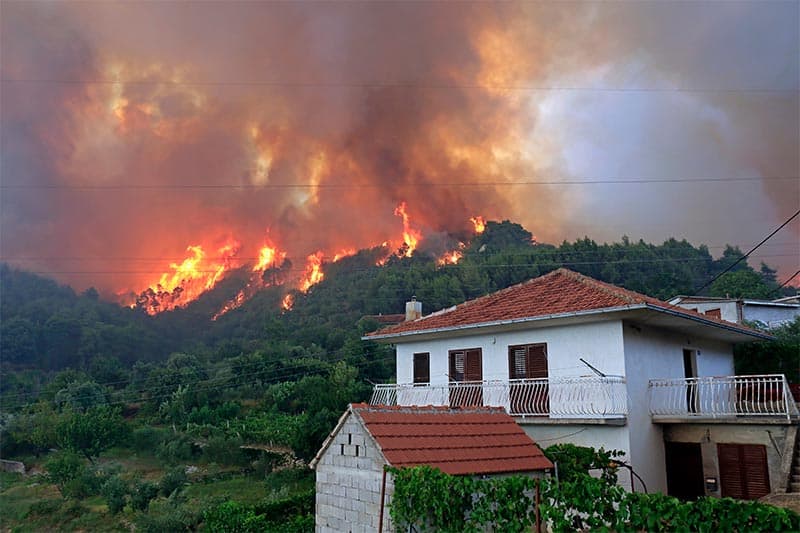
Blazing a Trail to Predict and Prevent Wildfire Damage
Their work is targeted at understanding the dual mechanisms that can cause buildings to burn.

Their work is targeted at understanding the dual mechanisms that can cause buildings to burn.
In a time when wildfires are exponentially increasing in frequency and severity, a research group led by Associate Prof. Ann Jeffers from U-M CEE are pioneering work that aims to reduce their disastrous impact on communities. Funded by the National Science Foundation, the team is focusing on computational models designed to predict structural ignition under wildfire conditions, specifically the raining ember showers, known as firebrands, that ignite them.
Their work is targeted at understanding the dual mechanisms that can cause buildings to burn. “The first is direct radiation from the fire, and the second, is the firebrands landing on the structure or finding their way inside,” explains Jeffers. It’s a phenomenon that until now has not been accurately replicated by existing predictive models.
The team’s researchers, Associate Prof. Seymour Spence and Assistant Prof. Estefan Garcia, are applying their expertise to create a two-pronged approach toward studying this impactful disaster mechanic. Jeffers describes their processes, “Spence is leveraging his experience with wind-driven rain models applying them to the simulations of firebrand showers in wildfire conditions by considering firebrands as particles in a multi-phase computational fluid dynamics simulation model. Simultaneously, the complex physical interactions like heat transfer occurring when firebrands impinge on structures are being studied using a Discrete Element Method (DEM) under the guidance of Estefan Garcia.”
Garcia says, “The challenge with modeling the impingement of firebrands is that they are not a single continuous material. Their collective impact on structures is a result of millions of distinct impact events, and the firebrands themselves are all disconnected from each other. They can flow all around a structure and impact it from all different directions. Numerically we can bring order to this chaos by modeling the firebrands as individual particles using the same physics principles we teach our first- and second-year undergraduates, and the heavy lifting of the millions of calculations is done with high-performance computing clusters.”
In addition to greater scientific understanding, the project aims to have practical applications for public safety and policy making. “The research results could determine which structures or elements of structures are most vulnerable to firebrand attack, thereby informing better construction materials and methods, policy decisions, and land management strategies,” outlines Jeffers. “The ultimate goal is to reduce losses in catastrophic fire events, increase community resilience, and potentially inspire the construction of wildfire-resistant communities.”
Transferring research ideals into practice does not come without its challenges. “The high fidelity of the computational simulation models requires advanced training to use them effectively, adding another hurdle to public acceptance and implementation,” acknowledges Jeffers. “Overcoming these obstacles will involve translating the research into accessible, tangible tools, possibly influencing risk analysis and policy frameworks in the future.”
Commencing in January 2023, the project will continue for three years. Jeffers says, “The hopes for the future are high; although we won’t solve all the problems posed by wildfires during this research cycle, the findings and created tools aim to bolster a scientific community addressing this problem’s critical gaps and fostering any subsequent work in this understudied field.”
The pressing need for climate change adaptation and the increasing threat of wildfires provide an urgent, impactful backdrop to this crucial research. The heartbreaking aftermath wildfires leave in their wake underscores the importance of CEE’s objective to mitigate future fire devastation.